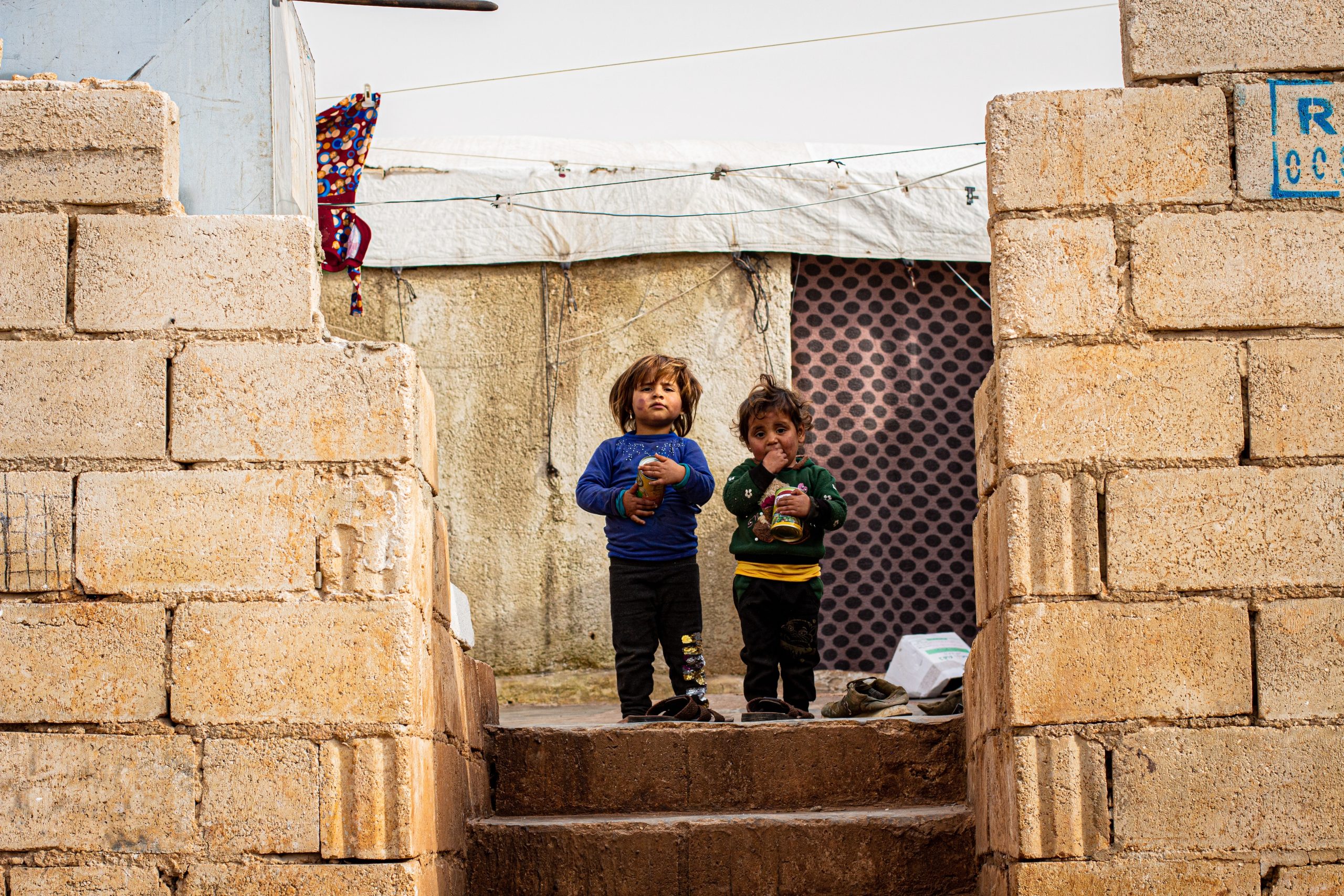
In the war in Ukraine, which has dragged on for four months now, the deployment of military drones, or unmanned aerial vehicles (UAVs) was expected to be a game changer. The reality, however, has not lived up to the promise—for either side in the conflict.
Both Ukraine and Russia have latched on to this aspect of contemporary military operations, deploying different types of UAVs—ranging from medium-altitude long-endurance (MALE) models, such as the popular Turkish-made Bayraktar TB2, to small off-the-shelf DJI-brand quadcopters—and for different purposes, including tactical reconnaissance, artillery adjustment, laser illumination, and direct-strike missions. The increased use of UAVs has prompted an unprecedented succession of analyses and opinion pieces about the alleged trailblazing impact of drones on warfare.[1] Drones were predicted to be the main arbiters of present and future combat by virtue of cutting-edge technological features, unique and affordable user-friendliness, the elimination of possible pilot losses, and the alleged capacity to strike unnoticed everywhere. These widely held assumptions did not arise specifically from the war in Ukraine; rather, widespread media coverage about the use of drones in other war zones, such as Libya and Syria, and particularly in Nagorno-Karabakh, where UAVs contributed to Azerbaijan’s swift victory against Armenia.
To the frustration of many, however, the argument that drones are a superior form of weaponry proves inaccurate when put to the test empirically. While drones have certainly driven important innovations and advancements in key areas such as intelligence gathering, precision strikes, and situational awareness, to name but a few, they have not (yet) altered the character of war nor provided game-changing capabilities for combatants, especially in high-intensity scenarios. To begin with, high-end technological capabilities such as EO/IR (Electro-Optical/Infra-Red) sensors and advanced radar payloads, are by no means specific to drones. Second, the vulnerability of drones to modern air defense systems and electronic warfare, along with their complex dependence on other military assets, sensibly constrains their standalone impact. Based on these arguments, a recent and thorough study on the performances of drones in Libya, Syria, and Nagorno-Karabakh debunks the myth of a “drone revolution” in military affairs and suggests “that drones have [neither] tilted the military balance toward the offense, nor had an equalizing effect between strong and weak states.” As with the conflicts in Syria and Libya, where Turkish-made drones suffered important losses, the drones used in the conflict in Ukraine have met a similar fate. Regarding the threat posed by air defenses, however, the imminent introduction of long-range stand-off guided munitions, such as the Turkish ÇAKIR and the SOM-family stealth missiles, with a range of 150 km and 275 km, respectively, means that advanced unmanned combat aerial vehicles (also known as combat drones, or UCAVs) will be able to engage most air defense systems remaining outside their effective range, potentially altering the equation. Furthermore, as Turkish defense expert Tayfun Ozberk[2] told this author, the lack or presence of an effective concept of operations should also be considered when assessing the performance of drones in conflict zones. Notwithstanding the abovementioned limitations, drones provide essential capabilities and act as key force multipliers, and their role is poised to increase exponentially in both quality and quantity in future military operations.
The war in Ukraine
So far, the conflict between Russia and Ukraine has confirmed that drones alone are not game changers. Both sides are deploying UAVs extensively and to different degrees of efficacy, with Ukrainian forces showcasing a more mature and effective use of drones than their Russian counterpart, especially for direct-strike operations. In this respect, Kyiv has smartly employed TB2s in strike missions against the Russian military’s soft belly, especially supply vehicles and logistics targets, in an effort to erode the momentum of the initial invasion. At the same time, TB2s have had several remarkable successes against Russia’s mobile short-range air defense systems such as Buk-M1/2, Tor-M1/2, and Pantsir S1 that were supposed to effectively counter similar threats. Ukraine’s choice to prioritize logistics and soft targets for drone strikes was part of a broader, more flexible defensive strategy aimed at slowing the invader and rendering its offensive operations unbearably costly. This strategy proved quite successful during the first phase of the conflict, as Russian mobile air defenses were too scattered and at times apparently inoperative but became more difficult when Moscow reviewed its strategy and concentrated its forces in the Donbas. Here, the massive, combined presence of multirange air defense systems and electronic warfare assets has mostly hindered the deployment of TB2s and resulted in at least eight such drones being shot down, showing the system’s vulnerability in heavily denied environments. Another hindering factor for Ukraine has been the rapid exhaustion of lightweight smart micro munitions, which Kyiv was demanding in larger numbers one month after the invasion. TB2s continue to perform key reconnaissance, strike, and battle damage assessment missions in southern Ukraine, where they have dealt some serious blows to Russian installations and personnel on Snake Island and the Kherson airbase. But again, the questionable way that Russia has used its air defenses in this area cannot be ignored.

Compared with Ukraine’s, Russia’s use of UCAVs has so far been much more limited in scale. Moscow has pushed into combat its new Inokhodets (Orion) MALE combat drone, which had been tested in Syria, alongside the older Forpost-R, a domestically developed drone based on the Israeli Searcher Mk II, but the operational impact of both systems has been more modest. The impact was modest largely because few of the drones (especially the Inokhodets) are available for deployment and any loss to enemy fire would be costly, a reality that may have prompted Russian military planners to deploy the UAVs sparingly. Military planners also were most likely aware that the environment in which the drones would have to operate was saturated with Ukrainian air defenses. An additional factor could be the limited stock of specific precision-guided munitions such as the KAB-20L and the KAB-20S, which Western sanctions on electronic and high-end components have further compounded.

Figure 2 – A Russian Inokhodets UCAV strikes a Ukrainian truck – Source: @RALee85, Twitter
When it comes to smaller tactical UAVs, the story is quite different. Here, Russia is playing a much more active role, deploying a vast assortment of systems, including the Eleron-3 and the omnipresent Orlan-10 (among others) for intelligence, surveillance, and reconnaissance (ISR) missions and artillery fire adjustment. This approach has resulted in more precise artillery strikes against Ukrainian units and improved the overall offensive performance of Russian forces, albeit at a high loss rate. So far, visual evidence indicates that at least 92 Russian UAVs have been destroyed or captured, 67% of which were Orlan-10s. Most of the losses were caused by man-portable air defenses or electronic countermeasures deployed by Ukrainian forces, compounded by command-and-control problems. For its part, Ukraine has visually confirmed the loss of 25 UAVs, although the actual number is much higher.

Figure 3 – A Russian Orlan-10 ISR UAV downed by Ukrainian armed forces – Source: @Arslon_Xudosi, Twitter
Like Russia, Ukraine is relying extensively on small UAVs to spot enemy positions and direct artillery fire with deadly effects. Quite interestingly, both sides, especially Kyiv, have used a large number of commercial UAVs, such as DJI Mavic 3 quadcopters for tactical ISR missions, thereby confirming the growing role of civilian-grade technology in warfare. In the case of UAVs, this “hybridization” trend emerged in late 2015 when the Islamic State used weaponized consumer surveillance quadcopters against Iraqi security forces. The use of commercial UAVs is now a common practice among guerrillas and non-state armed groups around the world, from the PKK to Mexican drug cartels. Ukrainian forces have refined these techniques, becoming specialized in wreaking havoc on Russian defensive positions and destroying Russian vehicles with different types of UAV-dropped fin-stabilized grenades. Ukraine also has benefitted from extensive training provided by Baykar, a Turkish defense company, in the use of multiple tactical UAVs, including the Bayraktar Mini. The practice of using commercial drones has helped to alleviate Ukraine’s lack of long-range artillery capabilities but only on a localized and limited scale. This outcome explains why Ukraine is desperately seeking long-range, precision artillery systems from Western countries. Furthermore, commercial drones are extremely vulnerable to electronic warfare and, in the case of DJI models, can be easily detected by a remote control suite developed by the company, which poses a serious danger to the operator. Yet, Ukrainian soldiers have been able to partially solve this issue by modifying the software of DJI-brand quadcopters so the devices cannot be tracked, showing again how important quick adaptability is in warfare.
Kyiv’s forces also have successfully used several larger fixed-wing drones, such as the locally produced Leleka-100 and the UJ-22 Airborne, to correct artillery fire. Occasionally, similar systems have been packed with explosives and used as suicide drones. Ukraine’s recent use of a commercial Chinese-made Mugin 5 Pro to strike the Novoshakhtinsk oil refinery inside Russian territory is a case in point and shows that relatively small, slow-flying drones continue to be difficult for air defenses to detect and, by virtue of their affordability and expandability, can be used in large numbers with very serious effects. The use of long-range suicide drones by the Houthis against targets in Saudi Arabia and the United Arab Emirates is another interesting example.
This aspect of drone usage certainly deserves closer scrutiny and may significantly alter the impact of UAV technology on warfare in the future because large swarms of suicide drones might be able to overcome even the most modern, layered air defenses. Advancements in anti-Jamming GPS technology and improved inertial navigation systems may render such a possibility even more likely. Nevertheless, the operational status and capability of air defenses matters, and both the Houthi and Ukrainian attacks exploited overstretched air defense systems. Specific and more sensitive counter unmanned aerial systems can help mitigate this threat.
What lessons can be learned?
The war in Ukraine offers key lessons on the important role that drones play in military operations today (and will play in the future) and why the capabilities and effectiveness of drones in combat zones are often overestimated.
In terms of their role in military operations, drones have dramatically improved situational awareness—especially at the tactical level—and created an impressive propaganda effect for the warring countries. As the conflict in Ukraine has shown, drones are formidable ISR assets that have revolutionized the way information and intelligence are collected, improving the quality of the latter while dramatically reducing the timeframe between collection and action. Their ubiquitous presence on the battlefield offers an unprecedented level of awareness and information regarding the enemy—a key to success—with enormous advantages in terms of preparedness, planning, and reaction. As one scholar rightly contends, the extensive presence of drones means that exploiting the element of surprise becomes more complicated, thus making large-maneuver operations riskier and, therefore, less likely. The slow attrition in the Donbas region, where the terrain would offer the ideal stage for large-maneuver forces, seems to corroborate this scholar’s assessment.
Drones have also become artillery units’ best friends, creating a deadly combination, even when used to direct unguided artillery strikes. In a sensors-saturated environment, the ability to strike more quickly and accurately than your adversary becomes essential. The confrontation in Ukraine shows that the synergic use of long-range precision artillery and drones can have devastating effects, wiping out command posts, ammunition depots, and tactical staging areas deep behind enemy lines and hampering the opponent’s ability to continue offensive operations. Similarly, this lethal combination is becoming instrumental in destroying enemy artillery positions.
The use of propaganda in the conflict between Ukraine and Russia is reminiscent of the conflict between Turkey and Azerbaijan during operation Spring Shield in March 2020 and the Nagorno-Karabakh conflict later that same year. Much like the warring parties in those conflicts, Ukraine is eager to share videos of its TB2s knocking out Russian vehicles to boost the morale of a nation under attack by a more powerful foe. With a dedicated song and a whole line of merchandise, the TB2 is akin to a national symbol of resistance that instills hope in the Ukrainian people and helps Kyiv win the information war.

Figure 4 – Video-feed from a Ukrainian TB2 UCAV acquiring targets at the Kherson airbase for Ukrainian artillery – Source: @GirkinGirkin, Twitter
At the same time, while it is premature to exhaustively assess the implications of drones, the available evidence suggests that the mainstream debate has exaggerated their impact. This tendency stems in part from years of drone usage in counterterrorism operations where the main risk for UAVs came from a malfunction rather than air defenses. The image created was one of the drones as invulnerable, high-flying killers; however, their deployment in high-intensity scenarios is quite another story. As discussed earlier, high-end drones do not operate in a vacuum; instead, they need a complex—and expensive—military ecosystem in which highly skilled operators use them in synergy with other assets, including electronic warfare and command, control, and communications structures, the role of which is equally important. So far, Turkey has showcased probably the most mature example of such an ecosystem—one that has been tested in conventional scenarios and is based on a novel, yet solid, concept of operations where UAVs serve as force multipliers while cooperating with electronic warfare and guided artillery, among other assets. The next level will be the use of drones in a network-centric environment, characterized by real-time data sharing and manned-unmanned teaming. Still, given the substantial costs involved in building such an ecosystem, not all countries will have access to it, thus confirming the evergreen validity of the Latin tag “pecunia nervus belli” (money is the nerve of war).
At the same time, the war in Ukraine has shown that less costly solutions are not necessarily worse or less effective than high-end systems, provided the solutions are used in favorable environments. In this respect, the Ukrainians have shown extraordinary creativity and adaptability with the combination of small drones and long-range artillery proving particularly devastating. Persistent surveillance also has deterred major offensives in the Donbas from both sides, thereby limiting the attack role of armored units and forestalling rapid, large-scale maneuvers. This effect is perhaps one of the major lessons to have emerged from the conflict, though drones are not solely responsible. Yet, to what extent does Russia’s overall mediocre use of electronic countermeasures and mobile air defenses fit into this equation? The question adds to a broader concern, one that Western strategists and observers alike should ask themselves: How would we use drones in high-end scenarios?
[1] See, among others: Stephen Witt, The Turkish Drone That Changed the Nature of Warfare, The New Yorker, May 16, 2022, https://www.newyorker.com/magazine/2022/05/16/the-turkish-drone-that-changed-the-nature-of-warfare; James Marson and Brett Forrest, Armed Low-Cost Drones, Made by Turkey, Reshape Battlefields and Geopolitics, Wall Street Journal, June 3, 2021, https://www.wsj.com/articles/armed-low-cost-drones-made-by-turkey-reshape-battlefields-and-geopolitics-11622727370; Arthur Herman, The Drone-Warfare Revolution Is Here, National Review, April 8, 2022, https://www.nationalreview.com/2022/04/the-drone-warfare-revolution-is-here/; Mohamed Basyouny Abd Elhaleem, Game Changer: Drones Increasingly Employed in Ukraine’s War. Here’s Why, InterRegional for Strategic Analysis, https://www.interregional.com/en/game-changer/. Mariya Petkova, Turkish drones: A “game changer” in Idlib, Al Jazeera, March 2, 2020, https://www.aljazeera.com/news/2020/03/turkish-drones-game-changer-idlib-200302182621318.html/.
[2] Turkey correspondent for Defense News and similar publications.
______________________________________________________
Orion Policy Institute (OPI) is an independent, non-profit, tax-exempt think tank focusing on a broad range of issues at the local, national, and global levels. OPI does not take institutional policy positions. Accordingly, all views, positions, and conclusions represented herein should be understood to be solely those of the author(s) and do not necessarily reflect the views of OPI.




